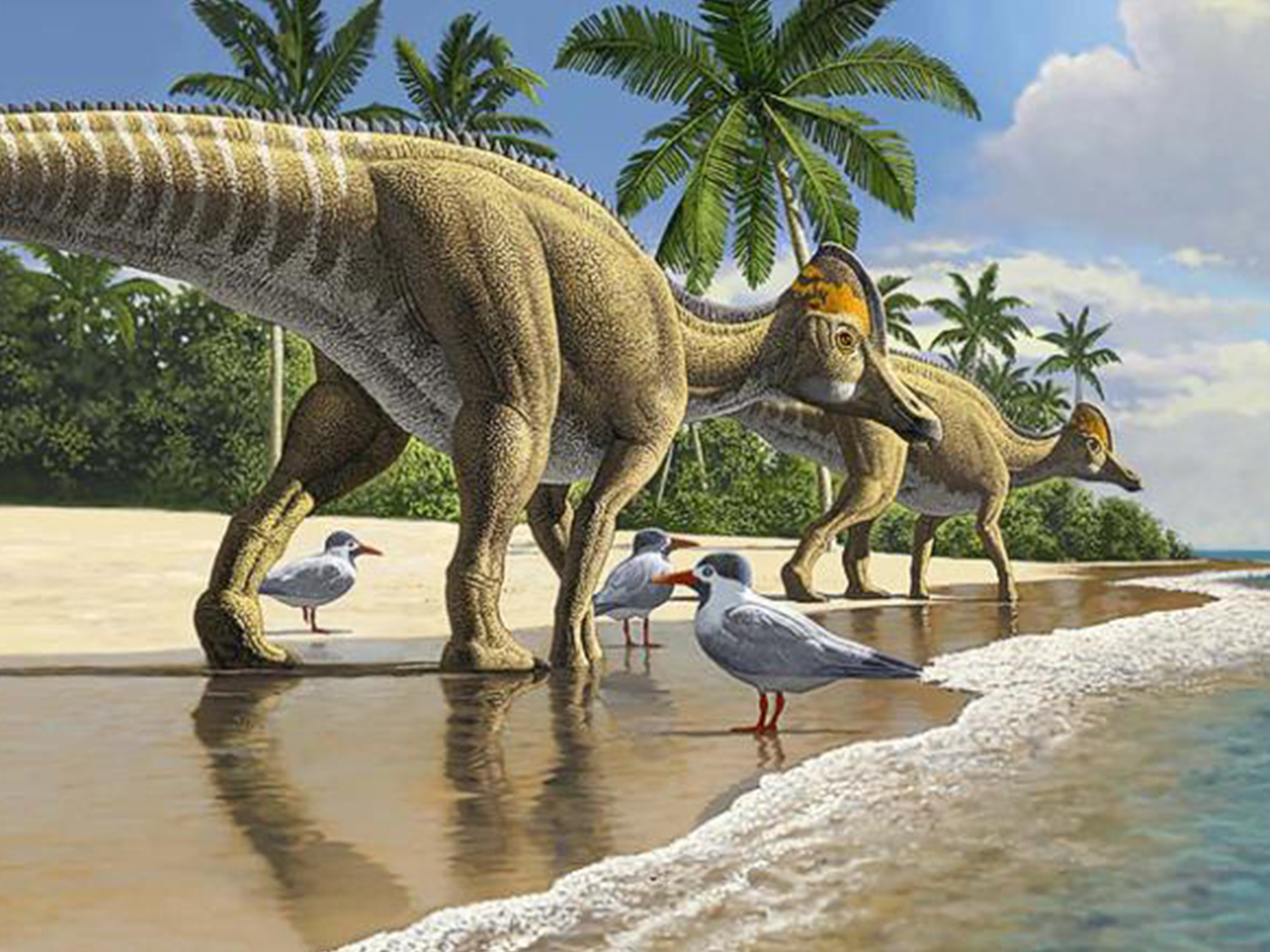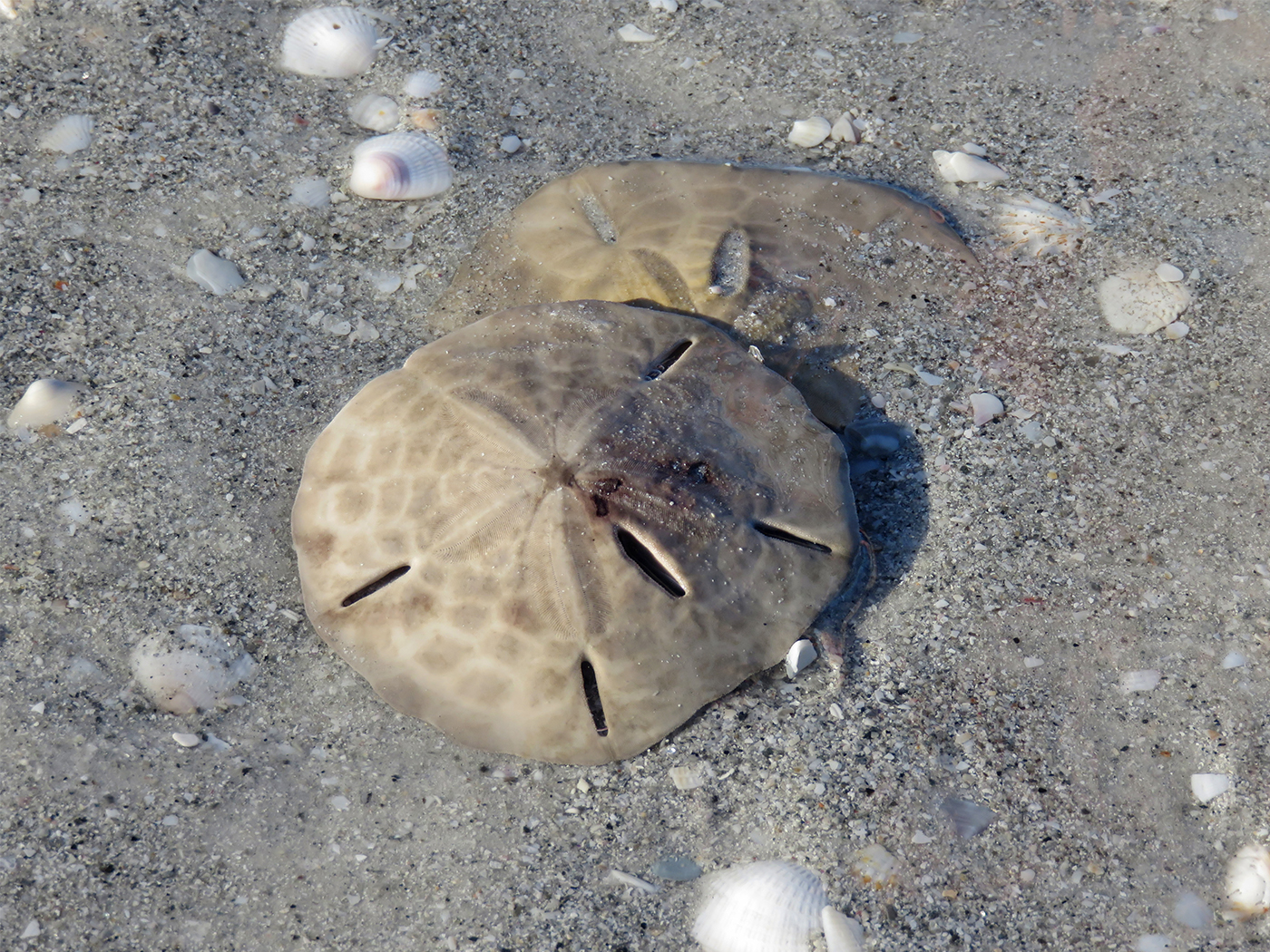Evolutionists maintain many millions of years ago fish evolved into tetrapods.1 But some of these animals after becoming established on land (e.g. mammals, birds and reptiles) turned around and went back into the ocean, becoming aquatic mammals (Cetacea) and reptiles (plesiosaurs and ichthyosaurs). So, the “Sauropterygia, or paddle lizards...re-adapted to living in the oceans” (emphasis added) including evolving efficient “four uniform wing-like flippers” used in swimming.2
Plesiosaurs, which lived about 210 million years ago, adapted to life underwater in a unique way: their front and hind legs evolved in the course of evolution to form four uniform, wing-like flippers.2
The “210 million years” is highly debatable,3 they—like ichthyosaurs and whales—were clearly designed to live underwater, and the fossil record does not document plesiosaur “wing-like flippers” evolving from legs. Evolutionist Michael Benton stated they “were highly adapted for submarine locomotion.”4
Dr. Anna Krahl conducted plesiosaur locomotion research at Ruhr-Universität Bochum and the University of Bonn in Germany.5
For more than 120 years, researchers in vertebrate paleontology have puzzled over how plesiosaurs might have swum with these four wings. Did they row like freshwater turtles or ducks? Did they fly underwater like sea turtles and penguins? Or did they combine underwater flight and rowing like modern-day sea lions or the pig-nosed turtle?2
Dr. Krahl reviewed the swimming action of plesiosaurs using computer tomographies and generated virtual 3D models. She discovered these reptiles could move through the water “partly by using the finite element method, which is widely used in engineering.”2 Indeed, the finite element method (FEM) is a popular process used for numerically solving differential equations and includes—among other areas—the traditional field of fluid flow of bodies, whether they’re mechanical or organic, such as reptiles in water.
"These digital models were the basis for calculating the forces using a method we borrowed from engineering: the finite element method, or FE," explains Anna Krahl. All the muscles and their angles of attachment on the humerus and femur were virtually reproduced in an FE computer program that can simulate physiological functional loads....2
Furthermore,
"The FE analyses showed that the humerus and femur in the flippers are functionally loaded mainly by compression and to a much lesser extent by tensile stress," Anna Krahl explains. "This means that the plesiosaur built its bones by using as little material as necessary." This natural state can only be maintained if the muscles that twist the flippers and the muscles that wrap around the bone are included.2
In other words, advanced research into plesiosaur locomotion is determined by utilizing mechanical engineering fundamentals.6 (The reader encounters in the above paragraph an unscientific appeal to internal causal factors when Dr. Krahl states the plesiosaur built its own bones.)
Plesiosaurs have always been plesiosaurs, “appearing” in the fossil record in the earliest Jurassic sediments.7 They were created thousands of years ago on day 5 of creation.
References
1. Sherwin, F. Did Fish Learn to Walk? Creation Science Update. Posted on ICR.org July 31, 2017, accessed June 8, 2022; Sherwin, F. Paleontology’s Pelvic Puzzle. Creation Science Update. Posted on ICR.org April 30, 2013, accessed June 8, 2022.
2. Staff Writer. How Plesiosaurs Swam Underwater. ScienceDaily. Posted on sciencedaily.com June 3, 2022, accessed June 8, 2022.
3. Thomas, B. Published Reports of Original Soft Tissue Fossils. Creation Science Update. Posted on ICR.org September 17, 2018, accessed June 8, 2022; Stinnesbeck, W. et al. 2014. A Lower Cretaceous ichthyosaur graveyard in deep marine slope channel deposits at Torres del Paine National Park, southern Chile. GSA Bulletin 126 (9-10): 1317–1339.
4. Benton, M. 2015. Vertebrate Paleontology. Wiley Blackwell, West Sussex. 257.
5. Krahl, A. et al. 2022. Determination of muscle strength and function in plesiosaur limbs: finite element structural analyses of Cryptoclidus eurymerus humerus and femur. PeerJ, 10.
6. Sherwin, F. Architecture and Engineering in Created Creatures. Creation Science Update. Posted on ICR.org September 29, 2017, accessed June 8, 2022.
7. Fisher, V. et al. 2015. Peculiar macrophagous adaptations in a new Cretaceous pliosaurid. The Royal Society. 2(12).
Stage image: plesiosaurus
Stage Image credit: Copyright © Wikipedia. 2013. Used in accordance with federal copyright (fair use doctrine) law. Usage by ICR does not imply endorsement of copyright holder.
*Dr. Sherwin is Research Scientist at the Institute for Creation Research. He earned an M.A. in zoology from the University of Northern Colorado and received an Honorary Doctorate of Science from Pensacola Christian College.





















